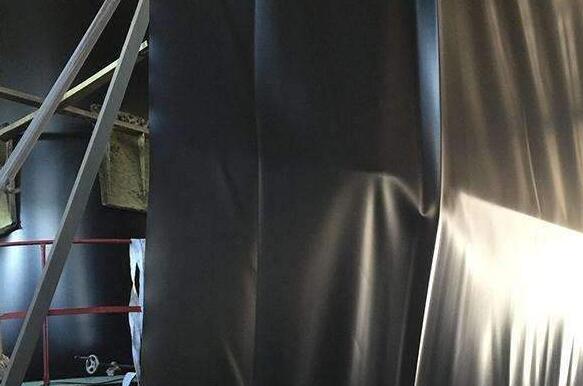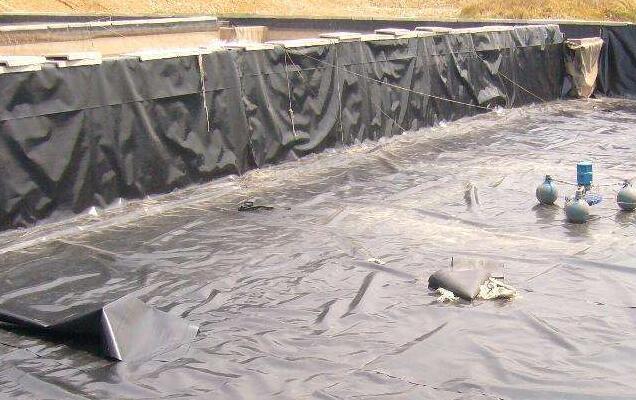Different Specifications of Geomembrane
In the modern construction process, the low cost textured geomembrane is mainly used to block the leakage path of the earth dam with the water-impermeability of the plastic film. It has greater tensile strength and elongation to withstand the water pressure and adapt to the deformation of the dam body. Geomembrane can be divided into different specifications, mainly from the following three aspects:
1. From the type of raw materials;
2. From the processing technology;
3. It is from the unit quality.

Three aspects can be subdivided:
1. Distinguish the types of high quality textured geomembrane from raw materials: such as HDPE geomembrane, LDPE geomembrane, LLDPE geomembrane, EVA geomembrane, etc.
2. In terms of processing technology, it is divided into smooth geomembrane, rough surface geomembrane, and composite geomembrane. From a large aspect, the process is further divided into two processes: blown film method and the laminating film rolling method.
3. The geomembrane is distinguished from the unit mass which is commonly known as square meters/gram weight or thickness. For example, a project requires a black smooth HDPE geomembrane with a thickness of 0 or 8 mm.
The above is related to the division of different textured geomembrane for sale specifications. The composite geomembrane can also be divided into two types: one cloth one film and two cloth one film. The models are 300g, 400g, 500g, 600g, 700g. , 800g, 900g, 1000g.
The impermeable membrane is a newly synthesized material with a geomembrane produced by environmental geomembrane manufacturers waterproof barrier. The impermeable membrane is made of milky white translucent to opaque thermoplastic resin material polyethylene resin. Because of the good performance of the anti-seepage membrane, it has been widely used. Generally, there are certain methods for anchoring the anti-seepage membrane.

1. Groove anchoring
In the construction of anti-seepage aquaculture geomembrane manufacturers in the landfill, solid waste landfill, and tailings disposal site, trench anchoring is generally used. When using trench anchorage, an appropriate width and depth of the anchorage trench should be dug according to the use conditions and stress conditions of the anti-seepage geomembrane. Generally, the width and depth of the anchorage trench is 80 cm. After the anchorage trench is dug, the anti-seepage geomembrane should be laid Backfill the soil in the anchor trench to compact it.
2. Anchor nailing
When the construction surface is concrete, cement, wooden board, red brick, iron plate, or other material wall surface, the construction of anti-seepage HDPE geomembrane factory price and composite geomembrane should generally choose nail anchoring. When anchoring with shot nails, you should choose a bead with a width greater than 2 cm and a thickness greater than 2 mm. The distance between the shot nails should be less than 0 and 4 meters. The exposed parts of the bead should be treated for corrosion, rust, and impermeability.
3. Expansion bolt anchoring
When the construction surface is concrete, cement, wooden board, red brick, iron plate, or another material plane, expansion bolt anchoring can also be selected for the construction of impervious geomembrane and composite LDPE geomembrane manufacturers. When using anchor bolts, expansion with a diameter greater than 4mm should be selected. The distance between bolts and expansion bolts should be less than 0, 5m.
The above is about the relevant methods that can be used when the anti-seepage membrane is anchored. Before construction, we still remind everyone to use the sandbags to temporarily fix the anti-seepage membrane before construction, so as to prevent the anti-seepage membrane from sliding or Was blown away.
